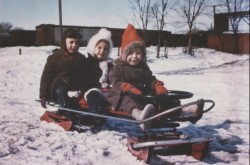Bákvḷá: A collaborative exhibition on Heiltsuk place-based foodways

The Heiltsuk Nation is located on the central coast of what is now known as British Columbia, with a central village at Bella Bella. Given that the Heiltsuk have occupied this territory since time immemorial, the idea of Canada is a novel one. It has required far greater adjustment and sacrifice on their part than what has been required from the settlers who colonized these lands.
Despite colonialism and the genocide described in the Truth and Reconciliation Commission’s report, the Heiltsuk people remain resilient, adaptable, and proud. They have continued to live in a dynamic environment bounded by the ocean and the coastal mountains — a rich territory full of diverse life, including a wealth of plants and animals to which they are intimately connected. Their experience and knowledge about the land and ocean dates back millenia.
One thing that keeps the Heiltsuk anchored to their territory is tradition — and the knowledge it embodies — especially their seasonal cycle of food gathering. As Curator of agriculture and fisheries at Ingenium, I am honoured to work with the Heiltsuk Nation on an exhibition project entitled Bákvḷá, which shares this tradition with visitors.
Bákvḷá is a Heiltsuk word that means “to harvest and prepare food for the winter.” But its meaning is wider: it also means to harvest food in a good way, with a good heart and mind, honouring ancestral Heiltsuk laws.
Bákvḷá also means sharing the harvest with those who can’t participate in the hard work of gathering foods such as roe-on-kelp, the focus of this exhibition. Food sustains their connection with their territory, history, and knowledge systems — indeed their identity. As Vina Brown, the PhD candidate who initiated this project with a research paper, wrote: “We would cease to be Heiltsuk without these connections.”
The Bákvḷá exhibition explores the theme of renewal — and the start of the Bákvḷá cycle. It focuses on the Heiltsuk herring roe-on-kelp fishery — in the pristine waters along British Columbia’s central coast — and the healthy food it produces. In a series of beautiful images, the exhibit showcases this sustainable fishery, which harvests eggs, or roe, that have been deposited on kelp and hemlock branches. The harvest leaves the herring to spawn again.
Bákvḷá is a co-curated, collaborative exhibition between the Heiltsuk Nation and the Canada Agriculture and Food Museum. Presented in the Heiltsuk language, English, and French, Bákvḷá is the first exhibition in the museum’s Indigenous Foodways initiative. In the coming months, the exhibition will be simultaneously launched at the Big House in Bella Bella, British Columbia and at the Canada Agriculture and Food Museum in Ottawa, Ontario. Stay tuned for more details of this exciting, new exhibition.


















